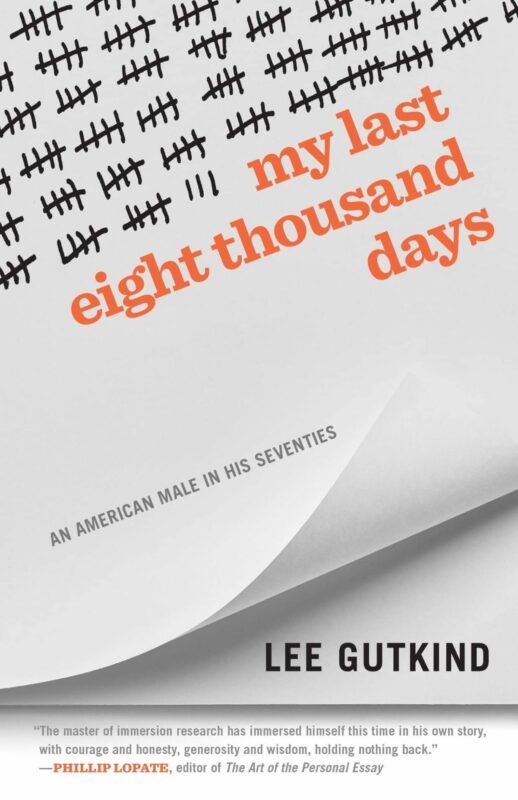What Is Creative Nonfiction?
By Lee Gutkind
I am often asked: “What is creative nonfiction?” Or, in some cases, “what the hell is creative nonfiction?” The answer—or answers—can be complicated because creative nonfiction may mean different things to different people, a characteristic that makes this form so elusive and alluring.
On its very baseline creative nonfiction is a literary genre. Some people call it the fourth genre, along with poetry, fiction and drama. And it’s an umbrella term for the many different ways one can write what is called creative nonfiction. Memoir, for example, personal essay, biography, narrative history and long form narrative reportage may all fit under the creative nonfiction umbrella. Recently, as the genre has evolved, there have been offshoots to the genre like speculative nonfiction, auto(biographical) fiction, lyric essay, and the visual essay, to name only a few.
Writers who write creative nonfiction are very different in voice, orientation and purpose. But what they have in common is that they are, in one way or the other, writing true stories that provide information about a variety of subjects, enriched by relevant thoughtful ideas, personal insight, and intimacies about life and the world we live in. And this scope and variety is exactly what makes creative nonfiction significant and, these days, so incredibly popular.
“Freedom” and “flexibility” are words I like to use when defining creative nonfiction, for the genre invites writers to push boundaries and open doors, offering them the opportunity to use all of the techniques of the fiction writer (or the poet)—dialogue, setting, description, inner point of view (seeing the world through the eyes of the person about whom they are writing)—in order to capture a reader’s attention and enlighten and intrigue them through nonfiction.
There are very few rules for writers of creative nonfiction. You can predict the future, speculate about the past, or imagine what could have happened or what someone might have been thinking, as long as you don’t violate the reader’s trust, and in the process your own credibility. There are, however, limits to the freedom and flexibility that make creative nonfiction so attractive and compelling—legal, ethical and moral issues that are challenging and, in many ways, impossible to clearly define. Freedom and flexibility—and daring—are governed by responsibility, not just to the people about whom we write, but to those who read and publish our work.
Nonfiction itself has had a bad rap in the literary world. For a long time, it was commonly believed that writing nonfiction was generally inferior to the writing of poetry and fiction. “Nonfiction is a pleasant way to walk,” Larry McMurtry once wrote, “but the novel puts one on horseback, and what cowboy, symbolic or real, would walk when he could ride?”
I remember reading this from McMurtry, who had written a great deal of nonfiction, in addition to his many novels and stories, and feeling more than a little annoyed and, at the same time, amused. He had to be joking, I thought. Or maybe he had just fallen off his horse. I pictured the comedian Rodney Dangerfield, who became rich and famous for the line “I get no respect,” which in many ways has been the story of creative nonfiction in a nutshell-up until present day.
The addition of the word “creative” to nonfiction was at first controversial, but it gradually reversed the belief that nonfiction was somehow second class, a cut below poetry and fiction. It liberated all writers, journalists especially, releasing them from longstanding rules and boundaries that had been so restrictive and inhibiting. For novelists, poets and essayists, “creative” encouraged experimentation and offered new avenues of expression. Scientists, physicians, engineers (Atul Gawande, Hope Jahren, Siddhartha Mukherjee, Henry Petroski, to name just a very few) were intrigued by the notion of being creative and began to write true stories that humanized and revealed the behind-the-scenes intimacies of their professions.
The interest in true stories motivated and opened doors for others who were not writers by trade to share their life experiences, finding meaning in the process and fulfillment in the connections they forged with readers.
This transition—an awakening to the potential and power of nonfiction that allowed and encouraged creativity—did not happen overnight and was not without resistance and often bitter infighting. Change was difficult for the literary, journalistic and academic communities, steeped in tradition and long resistant to new ideas, to accommodate. Indeed, the resistance in some corners far exceeded the scale of the change itself. The change was hardly drastic and was not really, when one looks back over the history of nonfiction, much of a change at all. Writers had been writing nonfiction that was creative and imaginative for centuries, familiar and famous names you will recognize–Daniel Defoe, George Orwell, Charles Dickens and many others—for centuries. The change, the adjustment that it precipitated, had much more to do with the approach or attitude toward nonfiction rather than its content and, of course, the idea that creative and nonfiction were not mutually exclusive. That change in approach and attitude is ongoing. The scope of nonfiction today, most especially what we call creative nonfiction, continues to evolve, informing and inspiring readers with stories that are true, compelling, revealing and always surprising.
“What is Creative Nonfiction” has been adapted from Lee Gutkind’s new book, The Fine Art of Literary Fist-Fighting: How a Bunch of Rabble-Rousers, Outsiders and Ne’er-do-wells Created Creative Nonfiction, to be published later this year by Yale University Press.
Explore Creative Nonfiction
Can’t get enough? Browse 25 years of archives.
View by Issue
View by Type
View by Topic
About Lee Gutkind

Lee's Latest Book
My Last Eight Thousand Days
This revealing, candid, and vivid portrait of one man’s view of aging written by the man who played a crucial role in establishing literary, narrative nonfiction in the marketplace and in the academy, examines male aging in a way we’ve not seen before.
Purchase

